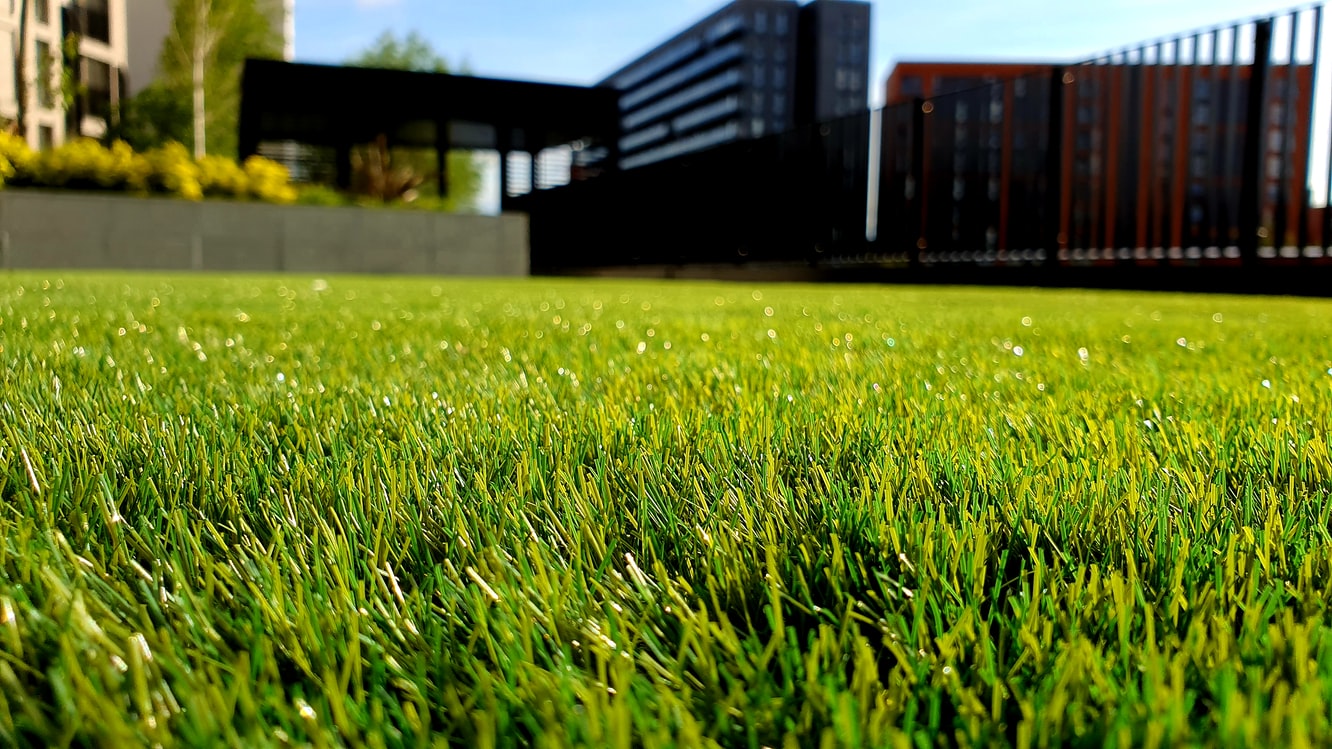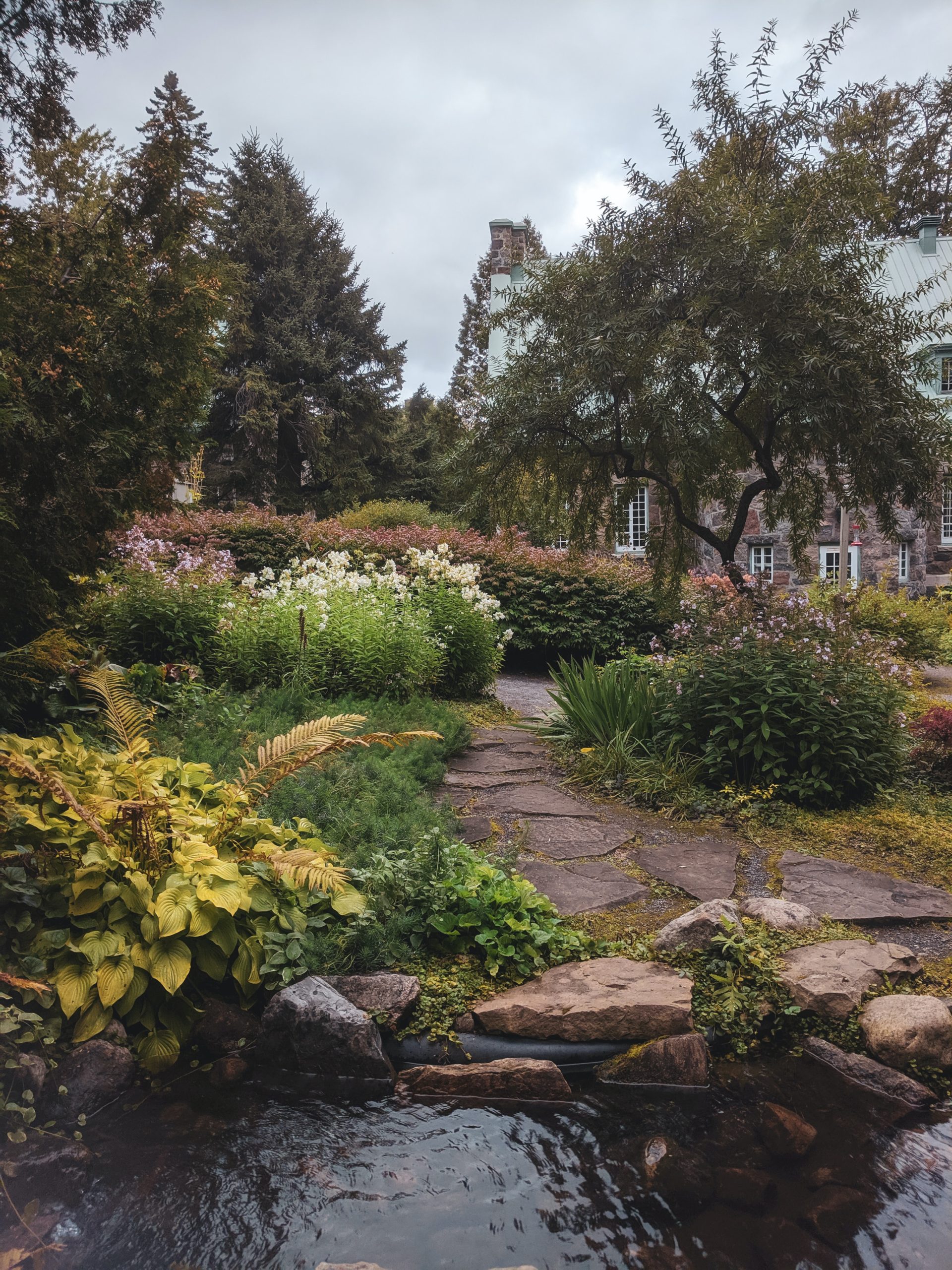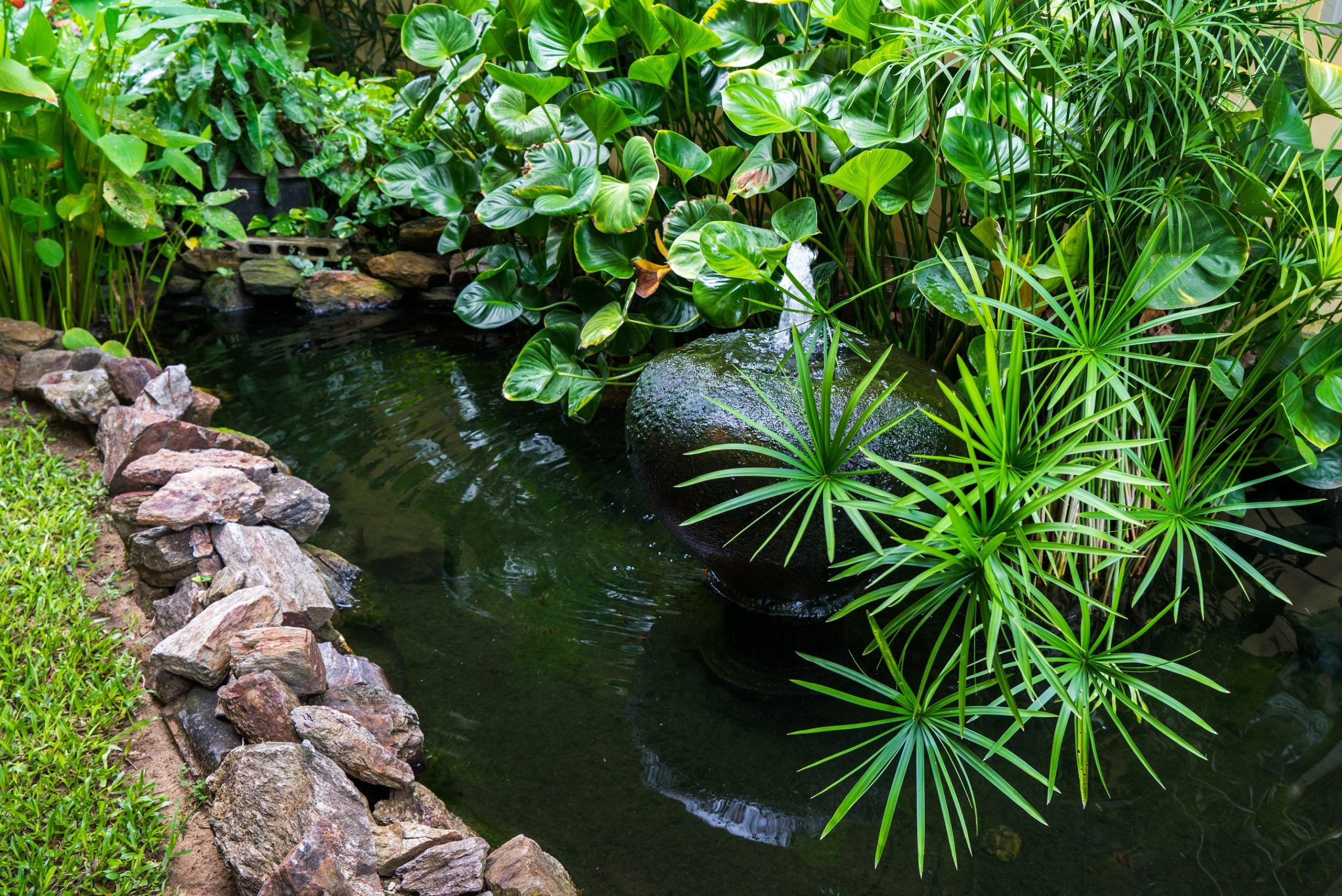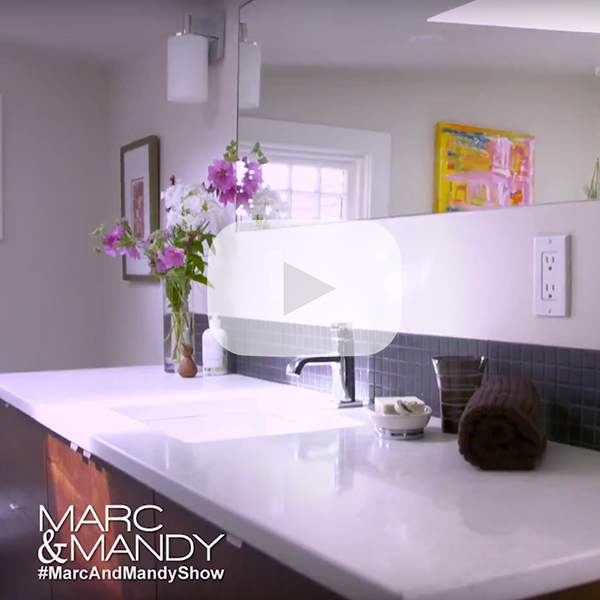When most people think about renovations they think about the interiors of their homes. Landscaping their yard and caring for their lawns are often an afterthought. On our podcast, All Things Renovation, we interviewed Marc Holley from Second Generation Landscapes. We wanted to find out how to have a lawn that will be the envy of your neighbours, as well as options for hardscaping, retaining walls, and water features.
How do we get a great lawn?
Drainage
Lawns hate to sit in water, so the drainage underneath the lawn is actually more important than the actual grass. A good layer of turf soil is also important to create a good root system. Putting sod down on the existing dirt may look okay for a short while but over time it will decline.
Drainage can be as simple as grading the whole lawn on a 2% slope so that the water has somewhere to drain away. In other cases you might need to add a French drain, which consists of a gravel-filled trench containing a perforated pipe. This redirects ground or surface water away from an area.
Soil
Turf soil is a pre-blended mix of sand and organic matter. The sand content is higher than planting soil, which allows the water to run through it more freely. The downside is that it doesn’t contain a lot of nutrients so it requires regular maintenance to keep it looking good.

What are the options for getting a brand new lawn?
Turf
The advantage of this option is you can use your lawn pretty quickly. Some suppliers have varieties that do better under different applications, such as on sports fields. Others have one variety that they swear by.
Seed
This option takes longer to grow and children and pets must be prevented from running all over it. This option is cheaper than putting in turf so it can be a good option under the right conditions.
Hydro seed
This comes out of a machine and is a slurry of nutrients and seed, and is usually reserved for larger areas such as sports fields or medians.
Care and Maintenance of Lawns
No one likes looking at a yellow lawn, particularly in the height of summer when water restrictions are in place. However, it will generally bounce back when it gets a bit of rain. Die-back was unavoidable in the big heat waves that we had last summer.
Chafer beetles can be a huge problem in lawns. Nematodes have been used with some success to control these pests, and a pellet called Grub B Gon that can be put down too. There is a fescue grass that they reportedly don’t like, but most lawns are a mix of three grasses, so there is always going to be a type that they like to eat.
An irrigation system will really elevate the look of a yard because it’s a consistent watering. There is an initial financial investment but they are worth it. There is less work for the homeowner as they don’t have to keep moving a sprinkler around on a schedule. You can also set them on a timer for the small window of time that you are allowed to water when it’s cooler. New systems have a rain sensor that skips watering if it rained the night before.
Hardscaping
Options for pathways include concrete paving stones, as well as a huge variety of natural stone options. It really comes down to personal taste.
A residential walkway typically requires a minimum of 4″ of packed in roadbase gravel underneath to stabilize it. This is followed by 1″ of bedding sand to level it, and then the paving stones are placed on top. Some natural stones are actually mortar-set into poured concrete. If you want a really natural pathway, with thyme or moss growing between the stones, a layer of coarse sand and soil will be added too.
Concrete is more cost effective because it’s square and easy to install, but it gets worn like a city sidewalk. It provides a smooth finish that is safer for the entrance to your home, rather than a rougher stone that can be a tripping hazard. Consider your snow removal needs as well when choosing what kind of pathway you want. Rough stone that will chip your snow shovel all the time is more of a challenge.

Retaining Walls
Wood retaining walls are the most cost effective option, although the pandemic has closed the gap with the skyrocketing cost of lumber. Wood walls will eventually rot but you can slow the process with additional drainage behind it. Paint all cuts with a wood treatment to prevent water getting into the wall that way too.
Concrete blocks cost more than wood but should last forever if done properly. There are many products with colour variations, shapes and sizes now, so you can create a much nicer looking wall than in the past.
Natural stone is a really nice look with a lot of variety, but the cost is going to be much higher. There is a lot of labour involved in installing large stones or anchoring a stone veneer onto footings and cinderblocks.
If you exceed 3-1/2′-4′, you will need to get one or more engineers involved, which can add to the existing cost of the materials. Depending on the location and soil, they will have to sign off on a design to allow you to get permits from the city. Terracing your yard or planting beds can help mitigate the height restrictions and save you a fair bit of money.
Water features
Ponds with gurglers can be a lovely addition to your yard. You will need to organize some electricity to run the pump. A nice, albeit luxurious, feature is a flow valve that will automatically top up your pond. This is useful if there is a lot of evaporation in the summer, or your feature splashes water out of the pond.
Gurglers come in a wide range of sizes and options. Small gurglers are quite popular these days as people want the sound of the water without the maintenance of a pond. They are easy to set up and cost effective. Once you start moving into ponds and streams, it’s a real art. You don’t just lay it down, all the elements need to be built up and designed. There is yearly maintenance to remove organic matter from trees that settles on the bottom. The equipment needs cleaning, and any koi or other fish need care as well.

Lighting
Landscape lighting adds a nice ambiance to the yard and helps with safety and security in dark areas. You only need a GFI plug on the outside of your house so it’s easy to install. A Ground Fault Interrupter plug shuts off power as soon as it detects an electrical fault. They are useful in damp areas like your yard. Note that lighting is one area where you really get what you pay for. You don’t want to use cheap fixtures because they don’t stand the test of time.
To listen to the full episode and read the show notes, visit www.AllThingsRenovation.com or click on the Podcast tab at the top of our homepage at www.woodbeart.com.


